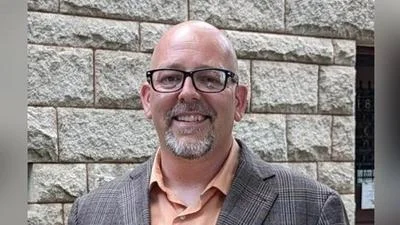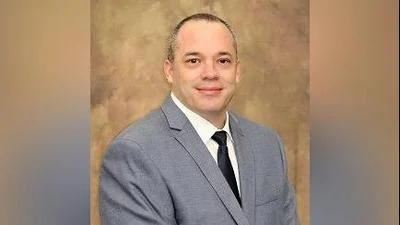The Illinois Department on Aging met April 18 to respond to the anticipated growth of the older adult population.
Here are the meeting's minutes, as provided by the department:
The Illinois Department on Aging "works to improve the quality of life for Illinois’ older citizens by helping them live independently in their own homes and communities."
Older Adult Services Advisory Committee Executive Committee Meeting
Date: April 18, 2016
Locations: Illinois Department on Aging offices:
• 160 N LaSalle, Suite N-700, Chicago;
• One Natural Resources Way, Springfield; and
• Conference call
In Attendance: Executive Committee Members: Carol Aronson, Shawnee Alliance for Seniors Terri Harkin, SEIU HealthCare Phyllis Mitzen, Health and Medicine Policy Research Group Susan Real, East Central Illinois Area Agency on Aging
Department Representatives: Kristopher Classen for Kelly Cunningham, Department of Healthcare and Family Services Linda Gonulsen, Department of Human Services, Division of Rehabilitation Services Megan Spitz, Illinois Housing Development Authority
Department on Aging staff: Jean Bohnhoff, Director John Eckert Sophia Gonzalez Jose Jimenez Lora McCurdy
Absent: Executive Committee Members; Cathy Weightman-Moore, Long-Term Care Ombudsmen, Catholic Charities Samantha Olds Frey, Illinois Association of Medicaid Health Plans
Department Representatives: Debra Bryars, Department of Public Health
Call to order, Introductions and approval of January 11, 2016 minutes:
John Eckert called for a motion to call the meeting to order. Carol Aronson made a motion; Phyllis Mitzen seconded. The motion was approved unanimously. Director Jean Bohnhoff welcomed everyone to the meeting. Members introduced themselves from Springfield, Chicago and on the phone. Eckert asked members for a motion to approve the January 11, 2016 minutes, Phyllis Mitzen made a motion to approve the minutes; Carol Aronson seconded. The minutes were approved unanimously without any corrections and will be posted on the Department website.
Update on OASAC Membership Vacancies Sophia Gonzalez provided an update on the seven vacancies on OASAC. The vacancies are following: a citizen over the age of 60, a Community Care Program Homemaker, a legal representative on behalf of the senior population, a nutrition representative, a nursing home or assisted living establishment, and a statewide senior center association. Some of the individuals that have been contacted for these vacancies included Louise Starmann, previous director from Aging Care Connections; Antoinette Gerencir from Community Care Systems; Carla D. Fiessinger from Monahan Law Group and Kaye Kibler from Willowbrook Memory Support Houses. The Department is still working on obtaining some leads for representatives for the following: Nutrition, Municipality, County, Township and a statewide senior association. Director Bohnhoff thanked everyone for their recommendations.
Update on Community Reinvestment Program (CRP) Lora McCurdy shared that the Department is in the process of finalizing the administrative rules for CRP and that there will be a need to change the CCP rules to be focused on individuals that meet the Medicaid eligibility requirements. Director Bohnhoff shared that the Department has been working on rules internally for some time; that they are still in a draft form but they are being cleaned up and formatted. Director Bohnhoff noted that the Department plans to share the CRP rules with the AAA’s, CCU’s and others in the Aging provider network later this week to obtain feedback. McCurdy stated that the OASAC Evaluation workgroup has met once and plans to meet in the next few weeks to review CCP program termination codes. These termination codes need to be revised to better inform us on what is happening to the individuals when they leave CCP and what additional services are needed. Additionally, the Department has researched other states that offer alternative programs for non-Medicaid recipients (Minnesota, Indiana, Wisconsin, and Iowa.).
Terri Harkin noted that she had several concerns regarding CRP: 1) no adequate opportunity for stakeholder input has been provided prior to Department filing rules for CRP; 2) there is no doubt that with $200 million less funds and 44,000 seniors being affected that seniors will face irreparable harm and lose services; 3) the only information that has been shared has been a 2- page Fact Sheet and a Power Point. Harkin also noted that the importance of the relationship between the senior and the home care aid is being overlooked; the homecare aids that come into the homes become the eyes and ears of the senior and may identify needs that might not be identified if homecare hours are reduced and services are contracted out. Director Bohnhoff thanked Harkin for her comments and shared that the services under CRP will not just be contracted out but instead a very person-centered approach would be used and services will be based on what the individual needs.
Director Bohnhoff also shared that some of the services that will be available under CRP include the following: EHRS, Adult Day Services, Homemaker, and Meals and additional services that have been identified by other states as being beneficial for participants and that are not available under CCP. For example, the Money Management Program, that is currently not available statewide but that can be beneficial to many seniors. It was noted that Banks currently offer this money management service for a fee and that perhaps CRP could pay for this service. Again, it was noted that other states offer similar programs for non-Medicaid seniors or they don’t offer services to non-Medicaid seniors. Director Bohnhoff referred to a document that lists every state in the U.S. and the services provided for non-Medicaid individuals. For example, the state of Indiana, offers home delivered meals, respite, wellness, transportation, senior fitness, medical management, assistive devices, nutrition, legal, physical and occupational therapy. Carol Aronson noted that all of the additional services mentioned are already available under the Older Americans Act. Jose Jimenez reported that the services previously mentioned are just an example of some of the services that will be offered under CRP but that there are other initiatives within the Department (e.g. Nursing Home Deflection and Assistive Technology) that may provide additional services). The CCU’s will be responsible for using a person-centered approach to determine what each individual needs while the AAA will manage the funding for each PSA under CRP. Harkin reinstated that the OASAC committee has a lot of ideas regarding person-centered planning and should have been given an opportunity to consult on the topic.
Teri Harkin asked that the Department not move forward with CRP until there is an opportunity for stakeholder involvement, specifically because the information that has been shared on CRP implies a cut to services. Jimenez reported that the Department has had ongoing discussions on CRP with the Aging network, including at least four other advisory committees, including the AAA and CCU councils. The Department has also received 32 questions regarding CRP, which will be answered. McCurdy shared that OASAC has formed an evaluation workgroup for CRP and it is still open to anyone interested in participating. This workgroup will look at the effectiveness of CRP and collect data. Harkin stated that the engagement and workgroup came after the program was announced.
Jose Jimenez noted that changes were required to respond to the anticipated growth of the older adult population in Illinois and having the funding to meet the increasing demand were required to sustain the growth. Phyllis Mitzen stated that we need to reconsider how to move forward, taking into account the budget cut and growth anticipation. Mitzen noted that she supports the idea of rethinking a new world and creating livable communities, utilizing the Bridge Program. She also questioned the role that OASAC plays on Department’s new initiatives and agreed with Harkin in that information should be shared prior to rolling out new initiatives.
Director Bohnhoff stated that she is willing to share the CRP draft rules with OASAC. Carol Aronson asked if there would be room for OASAC to provide feedback to the Department on CRP and reinforced that OASAC understands that information shared with the group should not be released to others. Mitzen asked if any Aging data can be pulled from MFP. Director Bohnhoff reported that the Department is working with HFS on obtaining data. Mitzen suggested pulling age 60 data and co-morbidity information would be very helpful. Aronson stated that more current data is needed from both MFP and Nursing Home Deflection Program. Director Bohnhoff asked the members if they had been involved with Department restructuring activities in the past. Mitzen responded that she was involved with the 1115 waiver opportunities. Susan Real shared that the Flexible Senior Services (FSS) went beyond the three CCP core services, which included assisted technology, home modifications and in PSA 05 included dentures (which was very flexible). The OASAC FSS Workgroup identified needs for senior services, medication management dispensers was included. McCurdy reported that the Department AMD requirements have been revised and will be included in the CCP rule revisions.
Director Bohnhoff stated that CRP rules will be shared with OASAC and feedback will be requested. She also asked for ideas on how we can move forward with addressing the needs of the projected increase in the aging population. It was also shared that the Department is looking at individuals that may potentially be eligible for Medicaid based on their income and assets and are not on Medicaid. The Department is looking at how these individuals can be re-enrolled on Medicaid. In an effort to update the CCU Care Coordinators on the Medicaid application processes, a webinar was offered by John Spears (HFS) on the ABE online application system and redeterminations. Director Bohnhoff noted that the Governor’s office has a newly formed task force that is performing spot checks on assets and income, as most of this information has been self-reported. Harkin stated that it should be the priority for the Department to enroll those individuals that are potentially eligible for Medicaid on Medicaid and begin receiving the match from CMS. Mitzen mentioned that OASAC had this idea before to have HFS Staff co-locate with CCU Staff to facilitate CCP participants being enrolled in Medicaid. Real shared that Williamson County had a co-location for completing applications and now there is the online system available. McCurdy stated that the Department is working in collaboration with HFS to see if the CCU can get an alert when a redetermination is due. During the webinar, it was shared that the ABE system will have upgrades in August that will include additional features that Care Coordinators can access to obtain additional information on applications. Discussion on IDoA Quality Initiatives & 2016 OASAC Activities Lora McCurdy introduced Mike Berkes, a new employee in the Division of Planning, Research and Development. She noted that he has rebalancing experience and worked on the quality components for MFP and Colbert at UIC College of Nursing. Berkes will be working on addressing quality requirements, including the federal waiver requirements around Person- Centered Planning and, the critical incident reporting system. His main job will be to put in place an automated quality assurance system that will coordinate with SIPS and APS. Another example is fall prevention and the importance of identifying all categories on falls that we would want to track. The CCU’s will be asked to report on critical incidents. Jose Jimenez shared that Division of Community Services will increase its focus on Monitoring. Jimenez noted that there is some restructuring within the Department and 10 individuals will be added to Monitoring/Quality Assurance from other areas. This group will be working together to get data and be more efficient when going out to the community. McCurdy stated that the POSM data information should be ready for sharing during the next meeting. There has been an improvement in the number of CCU’s completing this survey.
Carol Aronson asked what is being looked at with the POSM, initial screenings or redeterminations. McCurdy reported that she was working on both areas with data/IT staff and will follow-up at a later meeting. She noted that the Department is moving in the right direction in looking at Quality and the Department plans to share data and obtain feedback. It was noted that there is a need to train CCU’s in these areas. A question was asked about MCO’s and Quality Monitoring and Jimenez suggested that perhaps LaRhonda Williams, the MCO Ombudsman can be invited to the next meeting to provide an update.
Review/Approve Agenda for May 16th
Full OASAC meeting: John Eckert asked the group to take a look at the Draft agenda for the next Full OASAC meeting scheduled for May 16, 2016. Upon review it was agreed that two items added to the agenda; an update on Maximizing Medicaid Enrollment and discussion on CRP. It was mentioned not all items on the agenda could be covered in a two hour meeting. Phyllis Mitzen advised that the OASAC meeting be extended to 3 hours. The Department will check for conference room availability 16th agenda, from with 1:00-4:00 additions p.m. discussed. or 12:00-3:00 Carol p.m. Eckert asked for a motion to approve the May Aronson made a motion to approve the agenda, Susan Real seconded. All members voted in favor to approve the May 16th
Full OASAC agenda.
Announcements Phyllis Mitzen announced that Health and Medicine has planned several upcoming forums on Caregiving. In June, there will be a forum on Caregiving, Aging and Disabilities; and in September a series of forums on Caregiving will be available.
Motion to Adjourn Eckert asked for a motion to adjourn the meeting; Susan Real motioned to adjourn the meeting and Terri Harkin seconded. All voted in favor. The meeting was adjourned at 3:52 p.m.






 Alerts Sign-up
Alerts Sign-up